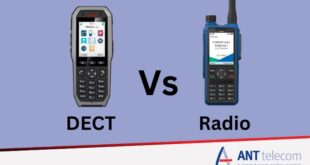Wireless telemetry systems are becoming increasingly important for plant-wide monitoring and control applications as cabling cost and the disruption caused by the associated installation and maintenance work become prohibitive. In many cases, the cost of installing control cables is many multiples more than the cost of the instrumentation itself, making wireless networks a much more attractive option. Here Darren Barrett discusses the increasing popularity of wireless telemetry systems for specialist applications such as petrochemical plants
Wireless remote monitoring technology provides the most convenient and cost-effective method for plant and asset managers to monitor and manage all important system data across their sites. In highly regulated industries, such as petrochemical plants, laying cables for data monitoring applications is not always feasible because of strict regulations and the extensive planning permissions required. Here, wireless communication systems can help facility managers retrieve and manage critical data from the field wirelessly, safely, and efficiently.
When dealing with radio-based wireless telemetry systems, it is important to remember that radio transmission distance and bandwidth is finite. This is based on factors such as the power of the transmitter, the sensitivity of the receiver, the distances involved, the type of antenna you’re using, the operational frequency and even weather conditions. These factors will determine whether you get a good signal or not.
It’s important to note that in most countries globally, the radio spectrum is regulated using licensed and unlicensed frequency bands to prevent interference between different users. Space on licensed frequency bands is at a premium and, with more businesses setting up radio telemetry equipment, demand will only increase. Until January 2018, there were just eight frequencies for license-free radios in the UK, ranging from 446.00625 MHz to 446.09375 MHz. Since then, the frequency spectrum has expanded significantly. For example, the 5GHz band runs from 5150MHz to 5850MHz, before being broken down into three A-C bands.
For many plant managers, the need to pay a fee for exclusive transmission rights means operating on a licensed band is undesirable. Instead, many opt for license-free bands that are open to everyone. Two of the most common unlicensed bands in the UK are 2.4GHz, which is the same frequency as WiFi and Bluetooth, and 868MHz.
The narrow coverage area and lack of penetrability of 2.4GHz signals means its application is often confined to residential settings. In contrast, 868MHz can transmit across longer distances and penetrate most objects. Although it requires a larger antenna than 2.4GHz, it has a range of up to 800 metres and a lower power consumption. While mobile phones, WiFi networks and other similar devices operate on 2.4GHz, 868MHz can support much of the radio equipment found in industrial settings, such as remote sensing, security and alarm systems.
Despite offering nonexclusive access, interferences are rare on 868 MHz bands. While open to all devices, 868 MHz is only really used for industrial, scientific, and medical applications, meaning there’s less competition from neighbouring sites for bandwidth.
A good wireless telemetry partner can integrate radio equipment seamlessly, providing support from the initial enquiry to purchasing and installation. Omniflex’s Teleterm remote terminal unit (RTU) range provides users with a small programmable RTU that is configurable and allows users to choose between analogue and digital inputs and outputs. Facility managers can integrate them with SCADA systems to achieve wireless connectivity in different license-free bands.
For example, when one of the world’s largest chemical manufacturers, Inovyn, faced challenges in gathering all the operational data from across its plant, it contracted Omniflex to provide a wireless telemetry system. For Inovyn, installing a wired network solution was not a viable option because of prohibitive costs and disruption to ongoing operations that would come from installing all the necessary cabling. Omniflex provided Inovyn with the solution in the form of its Teleterm M3 RTU module, which operated wirelessly on the 868 MHz unlicensed radio band, allowing it to collect all plant data conveniently and cost effectively.
Darren Barrett is product manager at wireless telemetry specialist Omniflex.
 Engineer News Network The ultimate online news and information resource for today’s engineer
Engineer News Network The ultimate online news and information resource for today’s engineer




